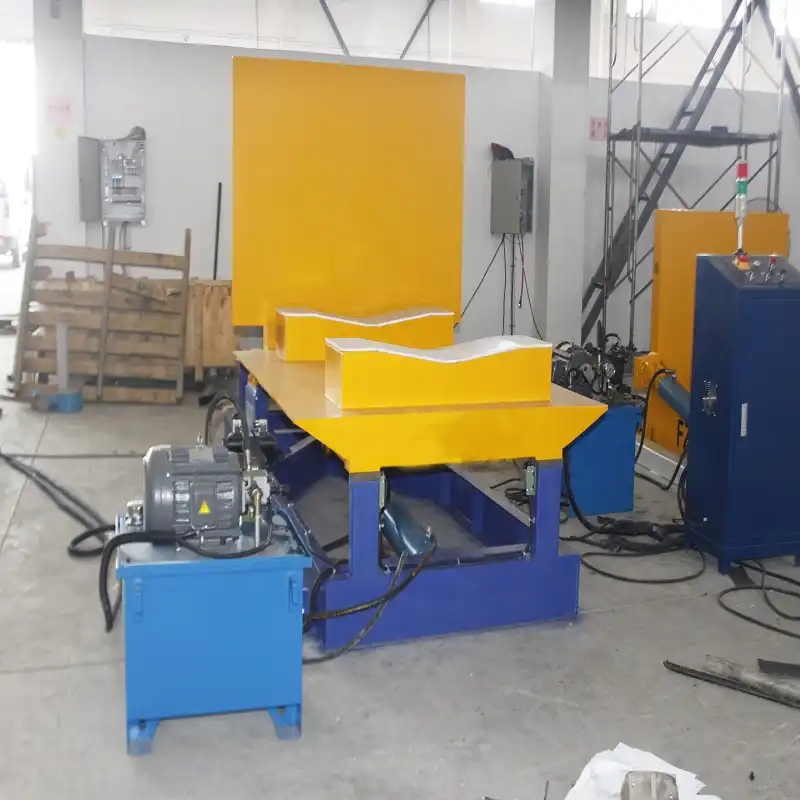
In the demanding environment of industrial paper handling, efficient and safe material handling equipment is paramount. Among these essential tools, the hydraulic upender emerges as a critical component for managing heavy, bulky paper rolls. Utilized in manufacturing facilities and distribution centers alike, hydraulic upenders significantly improve paper roll handling processes by reducing manual labor, enhancing safety protocols, and streamlining workflow operations.
Hydraulic upenders, also known as roll tilters or coil positioners, address the fundamental challenge of manipulating large paper rolls. They bridge the gap between the need for heavy lifting capacity and the delicate handling required to maintain paper roll integrity, ensuring both efficiency and product quality.
Consider a workspace where multi-ton paper rolls are lifted, rotated 90 degrees (from eye-to-sky to eye-to-horizon orientation, or vice versa), and precisely positioned with minimal risk to personnel or the product itself. This is the operational advantage provided by the hydraulic upender, a machine specifically engineered to automate heavy tilting tasks and optimize paper roll logistics. Let's explore what makes this equipment indispensable in modern paper handling operations.
1. Understanding Hydraulic Upenders in Paper Roll Handling
1.1. Definition and Core Functionality
A hydraulic upender is a piece of industrial material handling equipment that employs hydraulic power to safely tilt or rotate heavy objects, specifically large paper rolls in this context. These machines are available in various configurations and load capacities, designed to accommodate the specific weights and dimensions of the paper rolls being processed. Their primary importance lies in addressing the inherent safety risks and inefficiencies associated with manually handling such loads.
Fundamentally, a hydraulic upender utilizes fluid power to generate the significant force required for tilting and rotation. Key components typically include a robust steel frame (often with V-saddles or flat platforms tailored for rolls), powerful hydraulic cylinders, a hydraulic power unit, and control systems. Secure clamping mechanisms or specialized platforms ensure the paper roll is held firmly during the tilting operation, allowing for precise, controlled movement with minimal operator intervention.
A notable characteristic of hydraulic upenders is their adaptability to different roll sizes and operational needs within the paper industry. This flexibility simplifies handling tasks and significantly enhances workplace safety. Each rotation is executed with precision, contributing to a more efficient and secure handling process.
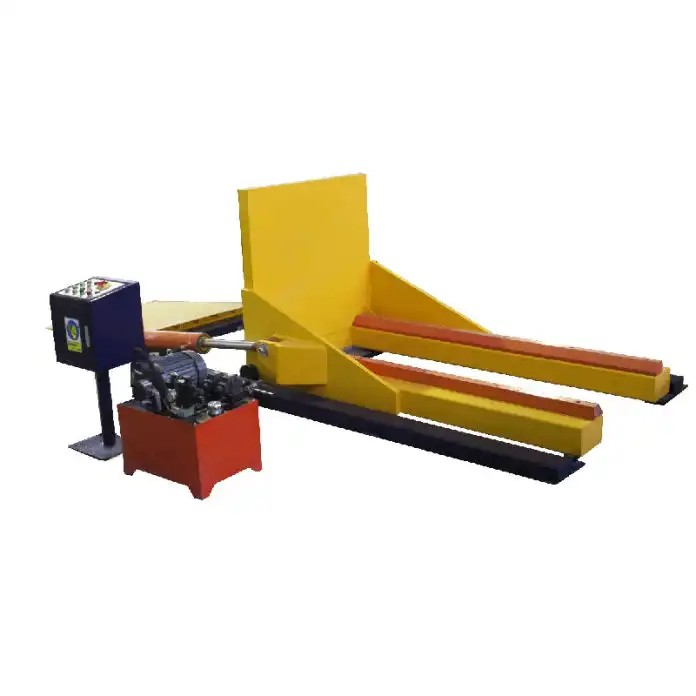
1.2. Optimizing Workflow with Hydraulic Upenders
The substantial weight and size of industrial paper rolls present significant handling challenges. While forklifts with specialized attachments can move rolls, precise tilting often requires dedicated equipment like hydraulic upenders. By enabling smooth, controlled 90-degree rotation, these machines facilitate accurate positioning for tasks such as loading onto converting lines, storage racking, or transportation vehicles.
Manual handling or improper equipment use can lead to accidents, product damage (like edge damage or crushed cores), and inefficiencies. Hydraulic upenders mitigate these risks by automating the tilting process, thereby protecting the valuable paper product and ensuring the safety of operators. This results in a safer and more productive work environment.
2. Enhancing Efficiency in Paper Roll Processing
2.1. Speed and Accuracy Improvements
In high-volume paper processing facilities, efficiency is a key performance indicator. Hydraulic upenders contribute significantly by increasing the speed and accuracy of roll handling. By automating the time-consuming and labor-intensive task of rotating paper rolls, these machines enable smoother, faster workflows – crucial in environments where minimizing cycle times directly impacts throughput.
The ability of a hydraulic upender to consistently rotate paper rolls to the required orientation reduces interruptions in production or converting lines. Fewer disruptions lead to increased overall output, helping facilities meet demanding production schedules. The precision of hydraulic control minimizes the potential for errors, product damage, or delays often associated with manual or less specialized handling methods.
2.2. Impact on Overall Productivity
Significant productivity gains are a direct benefit of integrating hydraulic upenders. These machines handle the heavy tilting task quickly and reliably, reducing the time spent on manual maneuvering and allowing personnel to focus on other value-added activities. This shift increases throughput and lessens physical strain on employees.
With hydraulic roll handling equipment in place, productivity levels often see a marked improvement. Operators can rely on the machinery for repetitive, heavy tasks, reducing fatigue and the potential for handling errors. Consequently, operational efficiency improves, enabling the facility to consistently meet or exceed production targets.
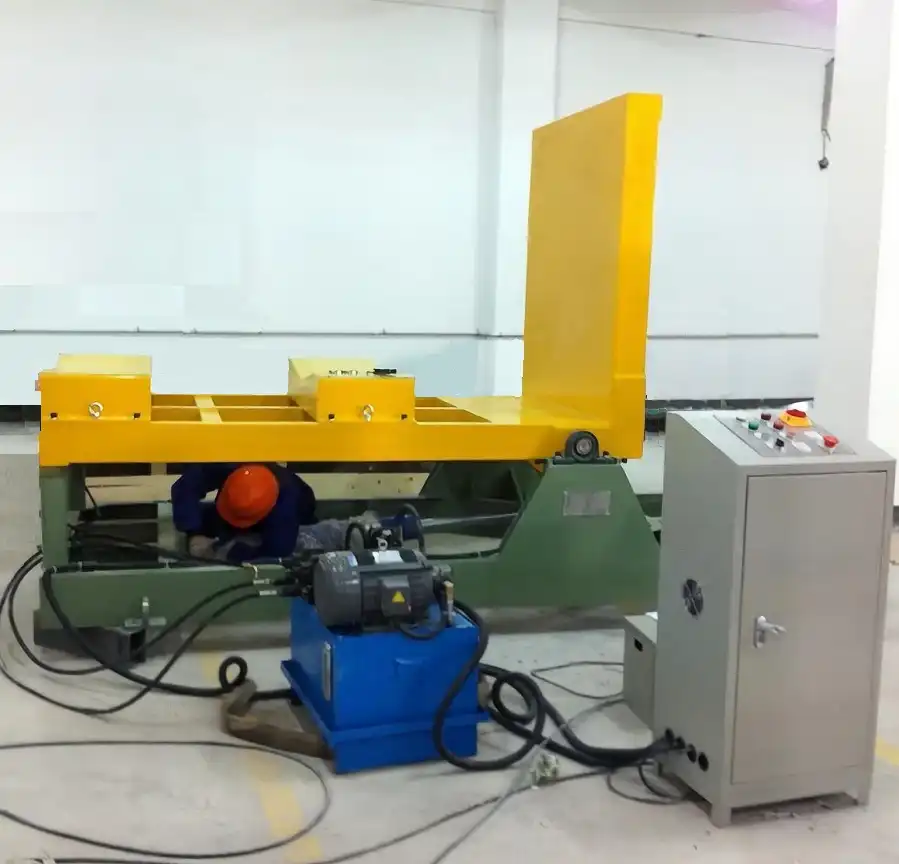
2.3. Streamlining Operational Flow
Operational efficiency extends beyond individual task speed to the overall flow of materials within a facility. Hydraulic upenders can be seamlessly integrated into production lines or logistics processes, often reducing the need for multiple handling steps or additional equipment. This streamlined approach minimizes bottlenecks and ensures a continuous, optimized movement of paper rolls through the facility.
For facilities managing a high volume of paper rolls, the role of hydraulic upenders in operational streamlining is crucial. They decrease the complexity of handling processes, freeing up valuable floor space and resources while ensuring each roll is handled consistently and safely. The outcome is a more efficient, cost-effective operation that maximizes throughput and minimizes non-productive time.
3. Evaluating the Cost-Effectiveness of Hydraulic Upenders
3.1. Initial Investment vs. Long-Term Savings
While the initial purchase of a hydraulic upender represents a capital investment, the long-term financial benefits frequently outweigh the upfront cost. By reducing reliance on manual labor for hazardous tasks and improving handling efficiency, these machines generate significant operational savings. Factors contributing to the return on investment (ROI) include reduced labor costs, prevention of costly product damage, lower workers' compensation claims due to fewer injuries, and decreased equipment downtime.
Another critical cost-saving element is the preservation of paper roll quality. Improper handling can easily damage roll edges or cores, potentially rendering part or all of the roll unusable. Hydraulic upenders provide controlled, gentle handling, minimizing the risk of such damage. Over time, this reduction in material waste and rework costs contributes substantially to the bottom line.
3.2. Reducing Labor and Maintenance Expenditures
Automating the tilting process with a hydraulic upender typically reduces the number of personnel required for handling heavy paper rolls, leading to direct labor cost savings. Often, a single operator can manage the upender, freeing up other workers for different tasks. Furthermore, by removing the physical strain associated with manual tilting, the incidence of musculoskeletal injuries decreases, lowering costs related to medical expenses, insurance premiums, and lost workdays.
Hydraulic upenders are generally designed for durability and reliable operation in industrial environments. While regular preventative maintenance is necessary (e.g., checking hydraulic fluid levels, inspecting hoses and seals, lubricating moving parts), modern systems are often robust, minimizing frequent repair needs and associated maintenance costs. Their heavy-duty construction ensures longevity even under continuous use.
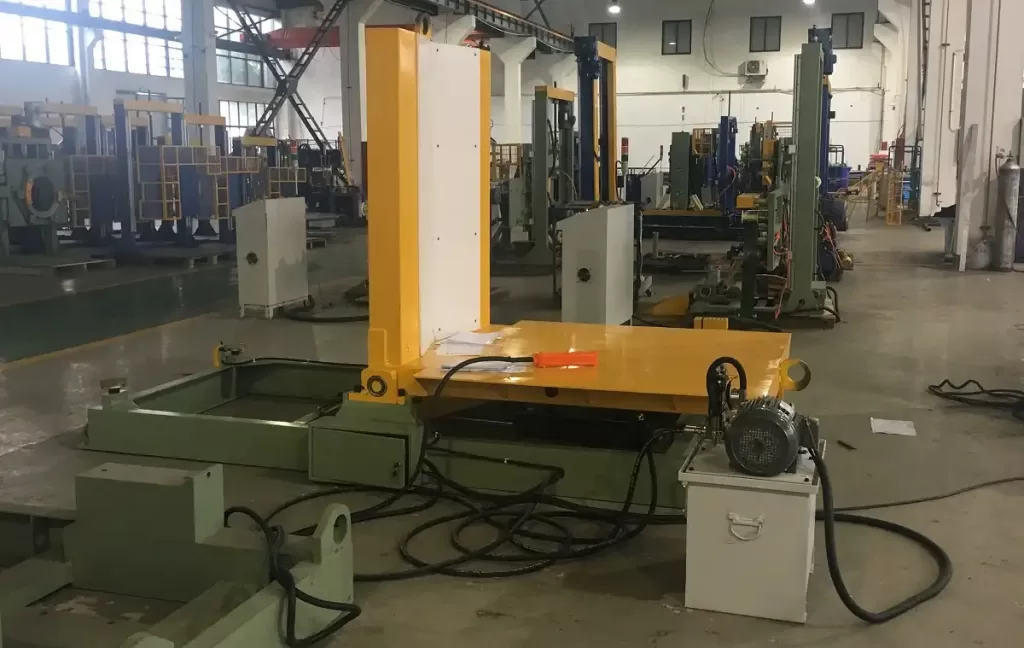
3.3. Maximizing Return on Investment (ROI)
Considering the combined financial and operational advantages – increased productivity, reduced labor requirements, enhanced safety, minimized product damage, and reasonable maintenance – hydraulic upenders represent a cost-effective material handling solution. They deliver a strong ROI over their operational lifespan. Evaluating factors such as roll throughput, current handling costs, injury rates, and product damage costs can help quantify the potential return for a specific facility. Ultimately, hydraulic upenders should be viewed not merely as an expense, but as a strategic investment in long-term operational efficiency, safety, and profitability.
4. Safety Advantages of Using Hydraulic Upenders
4.1. Mitigating Manual Handling Risks
Perhaps the most significant benefit of hydraulic upenders is the substantial improvement in workplace safety. Manually handling or attempting to tilt heavy paper rolls presents severe risks, including musculoskeletal injuries (strains, sprains), crush injuries, and falls. Hydraulic upenders effectively eliminate these hazards by automating the tilting process, ensuring controlled movement and reducing the potential for accidents.
For employees, this means a safer work environment. Reducing manual handling minimizes physical strain and creates a predictable, engineered process for repositioning paper rolls. The precise, controlled motion of a hydraulic upender significantly lowers the likelihood of unexpected load shifts, slips, or exertion-related injuries.
4.2. Enhancing Compliance with Safety Standards
Implementing hydraulic upenders helps facilities meet and often exceed occupational safety regulations and standards, such as those outlined by OSHA (Occupational Safety and Health Administration) regarding material handling (OSHA Materials Handling Guidelines). These machines are typically equipped with multiple safety features, which may include:
- Secure clamping systems or specially designed platforms
- Smooth, controlled hydraulic movement
- Emergency stop buttons easily accessible to the operator
- Potential for safety guarding or light curtains in integrated systems
- Hydraulic velocity fuses to prevent uncontrolled descent in case of hose failure
This engineered approach to safety provides significantly more protection than manual methods.
Adopting engineered solutions like hydraulic upenders can also foster a stronger safety culture within the organization. Demonstrating a commitment to employee well-being through investment in safer equipment often leads to increased safety awareness, better adherence to procedures, and improved employee morale.

4.3. Long-Term Ergonomic Benefits for Employees
Beyond preventing acute injuries, hydraulic upenders provide significant long-term ergonomic benefits. Repetitive heavy lifting and awkward postures associated with manual tilting can lead to chronic conditions like back pain, shoulder injuries, and other musculoskeletal disorders. By automating this strenuous task, facilities protect their employees from cumulative trauma, potentially reducing long-term healthcare costs and absenteeism while maintaining a healthier, more capable workforce.
The ergonomic advantages make hydraulic upenders a valuable asset for sustainable operations. Prioritizing employee health and safety through appropriate material handling equipment supports a more stable, productive workforce and aligns with modern expectations for responsible workplace practices.
Conclusion: The Indispensable Role of Hydraulic Upenders
Hydraulic upenders are highly effective and often essential tools for handling paper rolls in industrial settings. They deliver substantial improvements in operational efficiency, workplace safety, and cost-effectiveness. By automating the hazardous task of tilting heavy rolls, they alleviate physical strain on employees, prevent costly product damage, and streamline workflows, proving particularly valuable in high-volume paper processing and distribution operations.
The decision to implement hydraulic upenders goes beyond mere productivity enhancement; it represents a strategic investment in creating a safer, more ergonomic, and sustainable workplace. These machines are key enablers for optimizing material flow, reducing operational costs associated with labor and damages, and minimizing safety risks, thereby supporting a facility's long-term competitiveness and stability.
In summary, incorporating hydraulic upenders offers a comprehensive solution to the challenges posed by heavy-duty paper roll handling. They provide significant returns through immediate efficiency gains and long-term cost savings, establishing higher standards for both safety and productivity within the paper industry and related sectors.
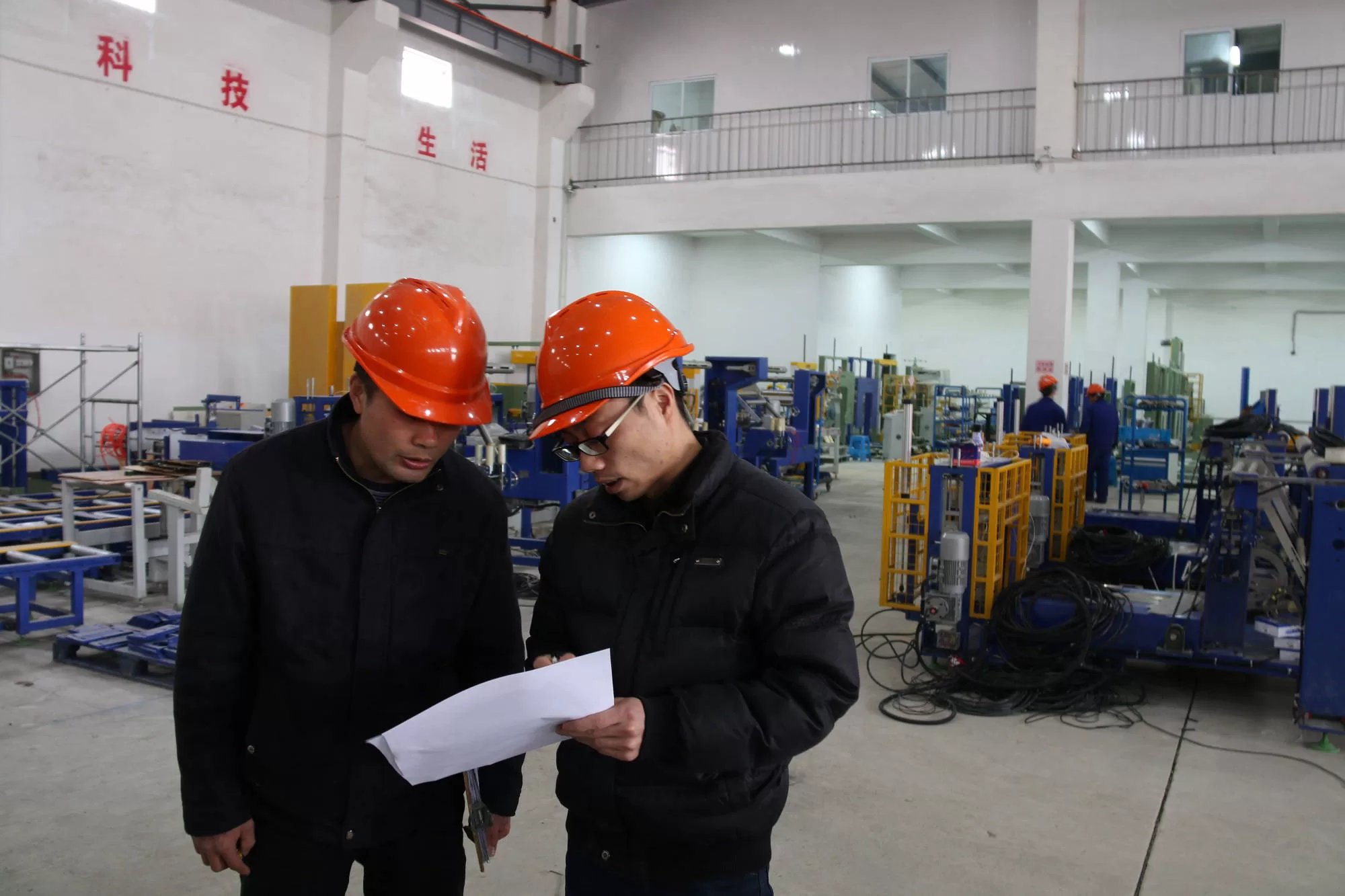
Get Your Best Solution !